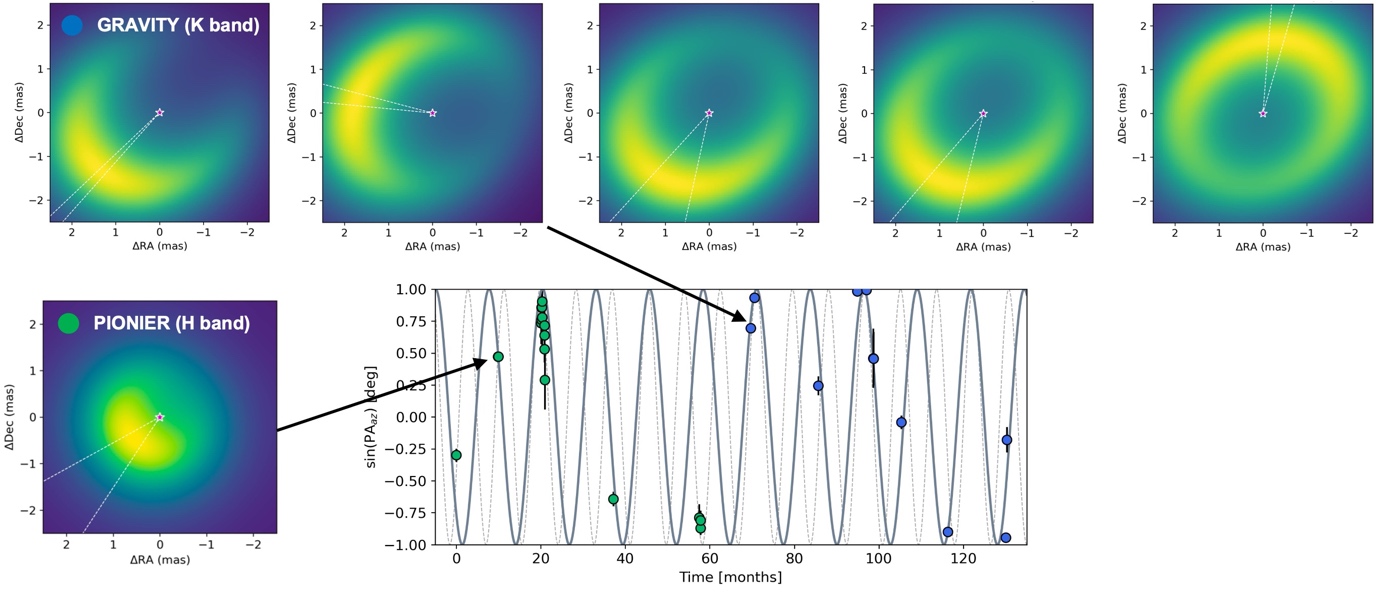Prof. Dr. Lucas Labadie, Invited Lecture, “From GRAVITY(+) Towards a Kilometers Baseline, Large Telescope Interferometer”, Ringberg, Germany:
Deciphering the physical processes occurring in the inner regions of protoplanetary disks is key to understand the environmental conditions of (terrestrial) planet formation and evolution. Thanks to its unique milliarcsecond angular resolution, VLTI/GRAVITY has studied the ~0.1 – 5 AU disk region in a homogeneous sample of nearly hundred young stellar objects covering the T-Tauri (41), Herbig AeBe (56) and high-mass (7) YSO classes.
The K-band GRAVITY YSO survey started in 2016 has made significant contributions to the field: we extended the infrared disk radius-luminosity relation over four orders of magnitude, which has permitted to evidence trends with the properties of the central star (mass, accretion rate); we tested possible evolutionary states using disk morphology proxies; we evidenced the month-scale morphological variability of the inner disk for few sources.
Furthermore, owing its high spectral resolution in the K-band, GRAVITY has spatially resolved in a sample of T Tauri stars the Brgamma emitting regions associated to hot hydrogen gas, which allowed us to differentiate between possible star-disk interaction mechanisms and directly observe magnetospheric accretion. We finally discuss the potential yield of the new GRAVITY+ upgrade, in particular towards the study of early Class I phases of YSOs in various star forming regions, as well as the possible legacy of GRAVITY(+) observations to refine theoretical physico-chemical models of disks.

